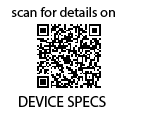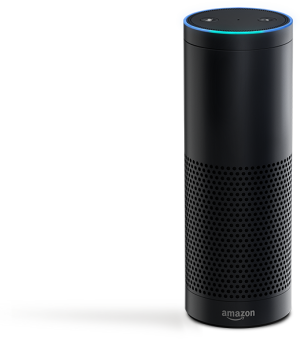Amazon releases expand horizons of the voice-control “Internet of Things”

Arya Maheshwari & Wikimedia Commons
October 18, 2018
The lights slowly blaze to life as you awake, mimicking the dawn sun as the clock glows blue upon reaching six o’clock. Perhaps a rooster crows through the speakers as a calm voice asks you to nod if you’d like your normal breakfast for Wednesdays. The microwave then whirs to life in the background, and the voice rhythmically goes through the day’s weather forecast, your calendar, stock gains and more. Ten minutes later, your car waits, doors opened and seats warmed for you to enter, with a virtual assistant ready to keep you company as you start your day.
To some, this description of a morning routine may seem to fit best in a futuristic portrayal of society of the “science fiction” genre, but it is rapidly becoming a fitting summary of the current state of user technology. This reality drew even closer when the electronic commerce and cloud computing giant Amazon, one of the fastest-growing technology companies with a market value of nearly $915 billion, released an array of new products on Sept. 20.
All connected to Alexa, Amazon’s virtual assistant similar to Apple’s Siri and Microsoft’s Cortana, the thirteen new hardware products include multiple versions of the Amazon Echo speaker, the Echo Auto for use in vehicles and a smart clock, wall plug and microwave. Nuanced new abilities were showcased for each device, with features allowing for more power available at users’ fingertips – or literally, through their speech.
Amazon’s releases underscore the company’s pursuit in expanding their presence in the “Internet of Things,” or “IoT.” The IoT refers to the growing networks of hardware devices that are linked to a common cloud, allowing for new levels of control and connectedness between everyday items. Specifically, the consumer IoT trend is about remote access and centralized control from the cloud, as it allows users to operate devices without any physical interaction and instead through media like voice control or phone apps, and then access data all compiled digitally in the cloud.
As a group, Amazon’s new Alexa-enabled devices will bring user experience closer to a smooth integration of technology with typical lifestyle. For better or for worse, with these releases and future ones, consumer devices will step closer to a technological reality that seemed like science-fiction just a decade ago.


















![“[Building nerf blasters] became this outlet of creativity for me that hasn't been matched by anything else. The process [of] making a build complete to your desire is such a painstakingly difficult process, but I've had to learn from [the skills needed from] soldering to proper painting. There's so many different options for everything, if you think about it, it exists. The best part is [that] if it doesn't exist, you can build it yourself," Ishaan Parate said.](https://harkeraquila.com/wp-content/uploads/2022/08/DSC_8149-900x604.jpg)




![“When I came into high school, I was ready to be a follower. But DECA was a game changer for me. It helped me overcome my fear of public speaking, and it's played such a major role in who I've become today. To be able to successfully lead a chapter of 150 students, an officer team and be one of the upperclassmen I once really admired is something I'm [really] proud of,” Anvitha Tummala ('21) said.](https://harkeraquila.com/wp-content/uploads/2021/07/Screen-Shot-2021-07-25-at-9.50.05-AM-900x594.png)







![“I think getting up in the morning and having a sense of purpose [is exciting]. I think without a certain amount of drive, life is kind of obsolete and mundane, and I think having that every single day is what makes each day unique and kind of makes life exciting,” Neymika Jain (12) said.](https://harkeraquila.com/wp-content/uploads/2017/06/Screen-Shot-2017-06-03-at-4.54.16-PM.png)








![“My slogan is ‘slow feet, don’t eat, and I’m hungry.’ You need to run fast to get where you are–you aren't going to get those championships if you aren't fast,” Angel Cervantes (12) said. “I want to do well in school on my tests and in track and win championships for my team. I live by that, [and] I can do that anywhere: in the classroom or on the field.”](https://harkeraquila.com/wp-content/uploads/2018/06/DSC5146-900x601.jpg)
![“[Volleyball has] taught me how to fall correctly, and another thing it taught is that you don’t have to be the best at something to be good at it. If you just hit the ball in a smart way, then it still scores points and you’re good at it. You could be a background player and still make a much bigger impact on the team than you would think,” Anya Gert (’20) said.](https://harkeraquila.com/wp-content/uploads/2020/06/AnnaGert_JinTuan_HoHPhotoEdited-600x900.jpeg)

![“I'm not nearly there yet, but [my confidence has] definitely been getting better since I was pretty shy and timid coming into Harker my freshman year. I know that there's a lot of people that are really confident in what they do, and I really admire them. Everyone's so driven and that has really pushed me to kind of try to find my own place in high school and be more confident,” Alyssa Huang (’20) said.](https://harkeraquila.com/wp-content/uploads/2020/06/AlyssaHuang_EmilyChen_HoHPhoto-900x749.jpeg)









